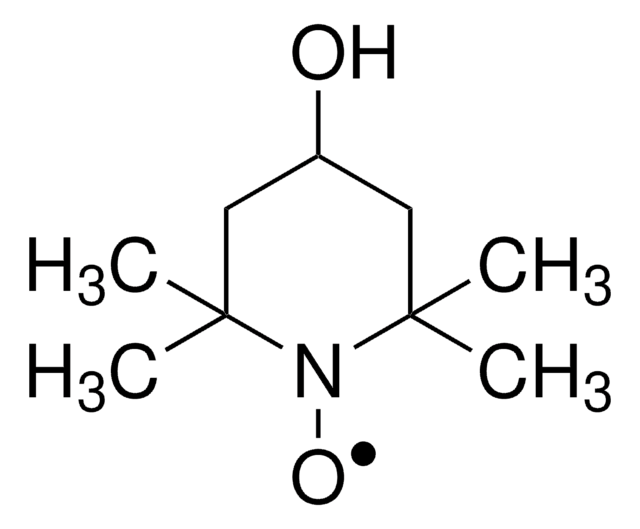A9099
Acrylamide
for molecular biology, ≥99% (HPLC)
Synonym(s):
2-Propenamide, Polyacrylamide, acrylic amide, akrylamid, Acrylic acid amide
About This Item
Recommended Products
grade
for molecular biology
Quality Level
vapor density
2.45 (vs air)
vapor pressure
0.03 mmHg ( 40 °C)
Assay
≥99% (HPLC)
form
crystals
impurities
≤0.005% Acrylic acid content
≤0.005% Water insolubles
conductivity
≤10 μmho (35% solution)
bp
125 °C/25 mmHg (lit.)
mp
82-86 °C (lit.)
solubility
water: soluble 2.5 g/10 mL, clear, colorless
cation traces
Fe: ≤1 ppm
Mg: ≤3 ppm
heavy metals (as Pb): ≤5 ppm
foreign activity
DNase, RNase, protease, none detected
SMILES string
NC(=O)C=C
InChI
1S/C3H5NO/c1-2-3(4)5/h2H,1H2,(H2,4,5)
InChI key
HRPVXLWXLXDGHG-UHFFFAOYSA-N
Looking for similar products? Visit Product Comparison Guide
General description
Application
- in polyacrylamide gel electrophoresis
- in the preparation of cleared gel samples
- to determine the effect of L-cysteine on acrylamide-induced testicular toxicity
Signal Word
Danger
Hazard Statements
Precautionary Statements
Hazard Classifications
Acute Tox. 3 Oral - Acute Tox. 4 Dermal - Acute Tox. 4 Inhalation - Carc. 1B - Eye Irrit. 2 - Muta. 1B - Repr. 2 - Skin Irrit. 2 - Skin Sens. 1 - STOT RE 1 Oral
Target Organs
Peripheral nervous system
Storage Class Code
6.1C - Combustible acute toxic Cat.3 / toxic compounds or compounds which causing chronic effects
WGK
WGK 3
Flash Point(F)
280.4 °F - closed cup
Flash Point(C)
138 °C - closed cup
Personal Protective Equipment
Regulatory Listings
Regulatory Listings are mainly provided for chemical products. Only limited information can be provided here for non-chemical products. No entry means none of the components are listed. It is the user’s obligation to ensure the safe and legal use of the product.
PDSCL
Deleterious substance
PRTR
Class I Designated Chemical Substances
ISHL Indicated Name
Substances Subject to be Indicated Names
ISHL Notified Names
Substances Subject to be Notified Names
JAN Code
A9099-2.5KG:4548173187990
A9099-25G:4548173188003
A9099-500G:4548173188010
A9099-100G:4548173187976
A9099-1KG:4548173187983
A9099-6X500G:4548173188034
A9099-VAR:
A9099-BULK:
A9099-6X100G:4548173188027
Certificates of Analysis (COA)
Search for Certificates of Analysis (COA) by entering the products Lot/Batch Number. Lot and Batch Numbers can be found on a product’s label following the words ‘Lot’ or ‘Batch’.
Already Own This Product?
Find documentation for the products that you have recently purchased in the Document Library.
Customers Also Viewed
Our team of scientists has experience in all areas of research including Life Science, Material Science, Chemical Synthesis, Chromatography, Analytical and many others.
Contact Technical Service








